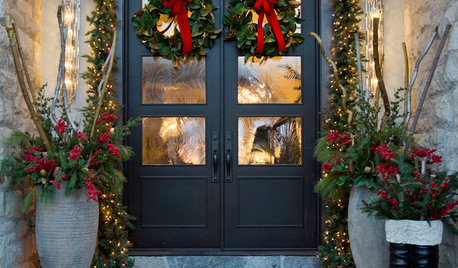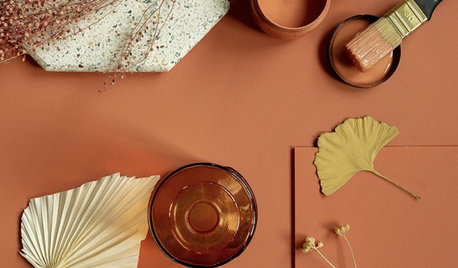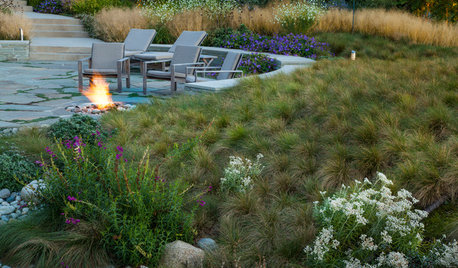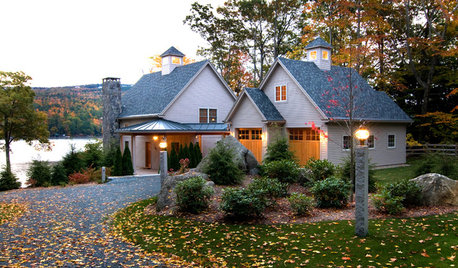Onion Talk for year 2022
HU-422368488
2 years ago
last modified: last year
Featured Answer
Comments (21)
Related Discussions
Best onion year ever
Comments (20)Mike, Under normal conditions, I cure them under the shade of the patio, but I've been curing them in the greenhouse this year because it has been raining here every day, the yard and patio are flooded with standing water, and the wildlife is hungry. Under those conditions, curing them in the greenhouse was the lesser of all the evils, and our daily high temperature in heavy clouds and rain was running in the low 70s, so it worked out well, even with doors and windows open and standing water on the greenhouse floor. I never saw the onions looking wet as if rain had blown in sideways through the doors and vents on the endwalls, which was a concern during the heaviest rain. I've never cured them in the greenhouse before and likely never will again unless we get similar weather in late May/early June, but this year it worked out just fine. My onions have been curing a couple of weeks, except for the recently harvested ones from last Wed. All the ones that have been curing for a couple of weeks are cured and I'll bring them into the house tomorrow to split them up for food preservation----some to be put into the pantry for fresh usage, some to be chopped and frozen, and some to be canned in various ways. It probably got hot in there today, but they are so well-cured that one hot day won't hurt them. I do have heavy shade cloth on it and have been surprised how nice it has felt in there most days. Today I left the house for a day out with Tim shopping and running various errands and eating a meal out that I didn't cook (!) and didn't give the onions and greenhouse a second thought, and hopefully I won't regret that tomorrow. Every now and then I have to get away from the daily grind of gardening, harvesting and food preservation, and this was one of those days. So, what was it that I did bring home from my shopping/errands day out???? Among other things, I bought some tomato plants for fall, some Bt for the corn, ingredients needed for several canning batches, copper fungicide and a biofungicide for everything else, spice bags for canning, and a new canning book because, you know, I needed to get away from gardening and canning. I failed at that, didn't I? The nice thing was that I did not almost step on a copperhead today, and the only mud I had to walk through was in our own yard so I didn't even have to wear ugly muck boots. I got to wear real shoes. I didn't have to slap away at mosquitoes buzzing around me all day. I didn't have to pour water out of the rain gauge and mentally add its total to my running total for the week or month. It was just a nice change of pace. In the meantime, hundreds of onions await the harvest kitchen beginning tomorrow. I'll probably pile up all the onions in the wheelbarrow and bring them all to the house first thing in the morning to get them out of the hothouse that the greenhouse likely will be tomorrow, and then I'll slog my way through the pile of them over the next few days. If I don't get with it, we'll be buried under onions because one-third of the crop is still growing out there in the garden. I'd like to at least work my way through the already harvested ones before I go out and harvest more. I probably planted more that I should have, but I wanted to have a lot for processing, and I do have that. Dawn...See MoreTalk to me about onions and garlic
Comments (35)Pre-cut onions always taste soapy to me. I've been meaning to get one of these rocker garlic presses sushipup mentions for my mom, who has issues w/ her hands. They look so much easier & smarter than a garlic press... And what about those mini electric choppers for onions? And FWIW, the way I peel onions is to cut almost all the way through across the bottom and top, then use the cut piece @ the bottom first to rip the skin longitudinally, the do the same @ the top - kind of unzipping the skin, so I can pull it off. Usually, I simply hold the knife still against the cutting board after making the first cut and pull the onion bulb back and away from it to rip the length of the skin, then do the same @ the stem end. Somebody taught me this trick many, many years ago. I hope my description is not too confusing. I found a Martha Stewart video that illustrates the concept w/ pearl & cippolini onions, using a paring knife. & I learned to peel garlic from Jacques Pepin; smash the cloves first w/ the flat side of a large chef's knife - or you can use the bottom of a jar or glass. HTH...See MoreGrowing Welsh onion or Japanese Bunching onion Negi, anyone???
Comments (22)"I keep reading that the germination rate of allium seeds falls off very sharply after the first year. I am planning on buying some seeds and there will be far more than I need for the moment. Will the seeds essentially not be usable next year?" Unprotected, at ambient temperature, the germination rate of onion seed will indeed drop off very rapidly. But if frozen, the seed will last for years. The seeds need to be dried to very low moisture content before freezing, so if your environment is humid, use desiccant to dry the seed first. Once dry, store the seeds in an air-tight container, (such as a ball jar, or doubled-up freezer bags) and place them in the freezer. When removing frozen seed for planting, the container must be allowed to reach room temperature before opening, or condensation can form on the seeds (which will quickly destroy them). It is a good idea to separate a large amount of the seeds which will be frozen into small zippered plastic bags (such as those sold in craft shops). That will allow you to quickly remove only the amount of seeds needed, while leaving the rest undisturbed....See MoreMay 1st ,2022 , week one
Comments (67)Anne, I was hoping you were in our neighborhood. . .we need more OKGW gardeners here. I'm 30 miles SE of Tulsa, 30 miles west of Tahlequah, 7-8 miles NE of Wagoner (Whitehorn Cove next to Ft Gibson Lake). Do you have garden areas planned out or are you starting from scratch? Well, you're well ahead of the game with those lovely wood chips! Kim, I'm thinking I WANT to plant stuff. Then I keep remembering my objective this year. Dealing with grasshoppers, pulling Bermuda, and pulling those blasted tree saplings that are having a banner year. I've not seen this horrible circumstance previous to this year. Every year, it seems, there is SOME crazy banner year for some insect/rodent/tree/ etc. And so I am planting very few vegetables. . . I do have a lot of native shrubs to find places for once I get the blasted tree saplings out. I lost so much muscle tone over the past 2.5 years because of the hip pain. So I'm good now, after the hip replacement. . . but just terribly out of shape. I HATE this. And yet, with gardening season kicking in, already am doing better. Just keep moving! The yard is turning its every year emerald green. . . I am so glad my favorite color is green. Though I hate Bermuda, it certainly does turn the lawn that beautiful green--and the back drop is green green trees. Successes out in the yard: lemon balm (which I'm tearing out); tree saplings (which I'm tearing out); Bermuda (which I'm tearing out); carrots and beets (which I'm thinning out). I'm also tearing out, well not tearing out, but trying to obliterate. . . the south American mirabilis (4 o'clocks). I put a blue tarp on top of this obnoxious spreading bed. I need for those flowers to be GONE. I'll be so happy to put in my 2 New Jersey shrubs . . so for now, the shrubs are in a holding bed in one of the minderal tubs. Haha, Larry, glad you made it back from the mouth of the Mississippi. And ready to zzzzzzzzzzz . XOXO...See MoreHU-422368488
2 years agoHU-422368488
2 years agolast modified: 2 years agoHU-422368488
2 years agolast modified: 2 years agoHU-422368488
2 years agolast modified: 2 years agoHU-422368488
2 months ago
Related Stories

HOUZZ PRODUCT NEWSDesign and Remodeling Pros Share Their 2022 Goals
After a busy and chaotic year, professionals on Houzz are planning for the future
Full Story
HOUZZ PRODUCT NEWS10 Big Takeaways From the 2022 U.S. Houzz Kitchen Trends Study
Get a rundown of some of the key features and styles homeowners want most in their remodeled kitchens
Full Story
HOUZZ CALLWhat New Holiday Traditions Are You Trying This Year?
Activities like cooking, decorating and sprucing up your home may offer new paths to joy in this unusual holiday season
Full Story
KITCHEN DESIGNExpert Talk: 10 Reasons to Hang a Chandelier in the Kitchen
Unexpected? Sure. Incongruent? Not at all. Professional designers explain why a chandelier can work in kitchens from traditional to modern
Full Story
EVENTSMaison & Objet 2021: Trending Colors for the Coming Year
The biggest color trends from the Paris fair include an autumn bouquet, pretty pastels and a step back into the ’70s
Full Story
GARDENING GUIDESGet Year-Round Good Looks With Matrix Planting in Your Garden
Any garden — from 100 square feet to 10,000 square feet — can apply this low-maintenance, sustainable design method
Full Story
KITCHEN DESIGNKitchen Confidential: 9 Trends to Watch for in 2016
Two top interior designers share their predictions for the coming year
Full Story
HOUZZ PRODUCT NEWSSee a Decade of Enduring Design Ideas From Best of Houzz Winners
Look back at popular design styles and features over the years and see which looks have remained timeless
Full Story
GARDENING GUIDESGet a Head Start on Planning Your Garden Even if It’s Snowing
Reviewing what you grew last year now will pay off when it’s time to head outside
Full Story
HOLIDAYS10 Tips for a Calm, Heartfelt Thanksgiving
Go easy on yourself this year and allow some breathing room to enjoy the holiday
Full Story



Nancy Waggoner